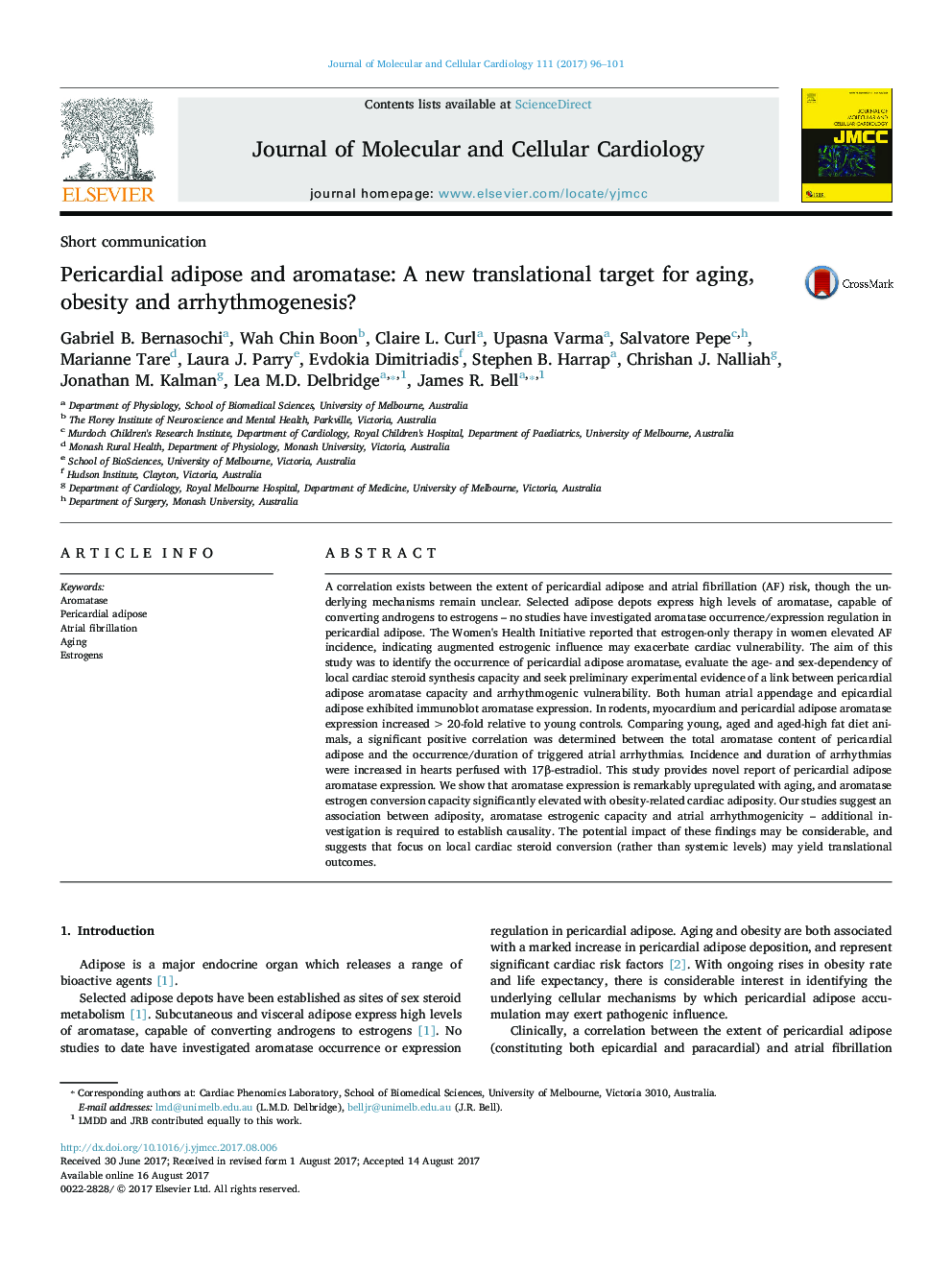| Article ID | Journal | Published Year | Pages | File Type |
|---|---|---|---|---|
| 5533623 | Journal of Molecular and Cellular Cardiology | 2017 | 6 Pages |
â¢Human atrial myocardial and pericardial adipose tissues express aromatase.â¢Capacity for local cardiac estrogen synthesis increases substantially in aged rodents.â¢Aging/adiposity identified as aromatase-associated arrhythmogenic predisposing factorsâ¢17β-Estradiol exposure promotes atrial arrhythmic activity.â¢Potential new mechanistic paradigm for understanding sex steroids and cardiopathology
A correlation exists between the extent of pericardial adipose and atrial fibrillation (AF) risk, though the underlying mechanisms remain unclear. Selected adipose depots express high levels of aromatase, capable of converting androgens to estrogens - no studies have investigated aromatase occurrence/expression regulation in pericardial adipose. The Women's Health Initiative reported that estrogen-only therapy in women elevated AF incidence, indicating augmented estrogenic influence may exacerbate cardiac vulnerability. The aim of this study was to identify the occurrence of pericardial adipose aromatase, evaluate the age- and sex-dependency of local cardiac steroid synthesis capacity and seek preliminary experimental evidence of a link between pericardial adipose aromatase capacity and arrhythmogenic vulnerability. Both human atrial appendage and epicardial adipose exhibited immunoblot aromatase expression. In rodents, myocardium and pericardial adipose aromatase expression increased > 20-fold relative to young controls. Comparing young, aged and aged-high fat diet animals, a significant positive correlation was determined between the total aromatase content of pericardial adipose and the occurrence/duration of triggered atrial arrhythmias. Incidence and duration of arrhythmias were increased in hearts perfused with 17β-estradiol. This study provides novel report of pericardial adipose aromatase expression. We show that aromatase expression is remarkably upregulated with aging, and aromatase estrogen conversion capacity significantly elevated with obesity-related cardiac adiposity. Our studies suggest an association between adiposity, aromatase estrogenic capacity and atrial arrhythmogenicity - additional investigation is required to establish causality. The potential impact of these findings may be considerable, and suggests that focus on local cardiac steroid conversion (rather than systemic levels) may yield translational outcomes.
